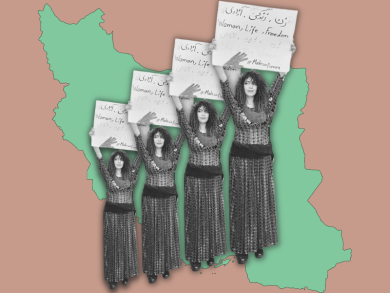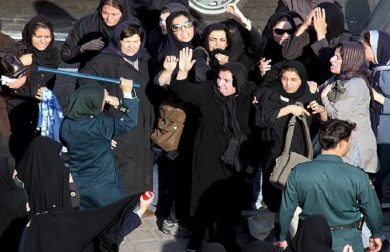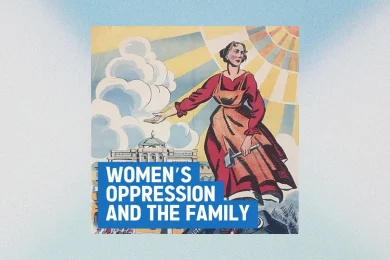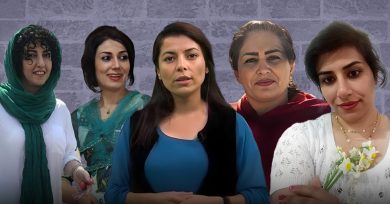In Iran, where press freedom is nearly nonexistent, women journalists face immense dangers for simply reporting the truth. The Islamic Revolutionary Guard Corps (IRGC) and the Iranian regime systematically silence, imprison, and torture women journalists who dare to expose human rights violations, government corruption, and state brutality. Despite these threats, these women persist, making journalism an act of resistance.
This article explores:
• The risks Iranian women journalists face under IRGC repression.
• Tactics of control, including arrests, censorship, and forced confessions.
• Stories of brave women journalists who continue to fight for press freedom.
• How the international community can support them in their struggle.
1. The IRGC’s War on Press Freedom
A. Why the IRGC Targets Women Journalists
The IRGC views independent journalism as a threat to its control over public perception. Women journalists are particularly targeted because they:
• Expose human rights abuses, especially against women and minorities.
• Challenge the state’s official narratives, reporting uncensored truths.
• Amplify voices of protesters, linking Iran’s struggles to a global audience.
By silencing women journalists, the IRGC attempts to erase the voices of those who document oppression and speak truth to power.
B. Methods of Repression
The IRGC’s tactics for silencing women journalists include:
1. Arbitrary Arrests & Long Sentences
Women journalists are frequently arrested under vague charges such as:
• “Propaganda against the state.”
• “Collaboration with hostile foreign governments.”
• “Spreading lies to disturb public opinion.”
These fabricated charges result in lengthy prison sentences with no fair trials.
2. Torture and Forced Confessions
Many imprisoned women journalists report:
• Severe beatings and sleep deprivation.
• Psychological torture, including threats against family members.
• Sexual violence as a tool of humiliation and fear.
Some are forced into televised confessions, used to discredit their reporting.
3. Digital Surveillance & Cyber Warfare
• The IRGC monitors social media and hacks accounts of women journalists.
• Internet blackouts are imposed to block real-time reporting.
• Fake news campaigns attempt to discredit independent journalists as “foreign agents.”
4. Threats Against Families
The IRGC frequently harasses and arrests the families of women journalists, using them as leverage to force self-censorship.
2. Stories of Courage: Women Who Risk Everything for the Truth
A. Niloofar Hamedi – The Journalist Who Broke the Mahsa Amini Story
Niloofar Hamedi, a reporter for Shargh newspaper, was among the first journalists to reveal the death of Mahsa Amini in morality police custody.
• She published a photo of Mahsa’s family mourning, which went viral, sparking nationwide protests.
• Shortly after, she was arrested by the IRGC and held in solitary confinement.
• Despite international outcry, she remains imprisoned, a symbol of the price of truth in Iran.
B. Elaheh Mohammadi – Covering Protests, Facing Persecution
Elaheh Mohammadi, another journalist, was arrested for reporting on Mahsa Amini’s funeral, where mass protests began.
• She was accused of “endangering national security.”
• Her trial was held in secrecy, with no access to legal representation.
• Her courageous reporting helped spread the truth despite state propaganda.
C. Masih Alinejad – A Target in Exile
Masih Alinejad, an Iranian journalist in exile, has become a leading voice for Iranian women.
• She founded #MyStealthyFreedom, where women share photos without hijabs.
• The IRGC plotted to kidnap her in 2021, but the plan was foiled.
• Despite threats to her life, she continues to expose regime abuses through social media.
D. Sepideh Gholian – A Journalist Turned Political Prisoner
Sepideh Gholian was arrested for reporting on labor protests and later sentenced to years in prison.
• She endured torture, forced confessions, and brutal interrogations.
• Upon her temporary release, she chanted anti-regime slogans in front of Evin Prison, knowing she would be re-arrested.
• Her fearless defiance made her a symbol of unbreakable resistance.
3. The Role of Digital Journalism in Defying the IRGC
Despite censorship, Iranian women journalists use digital platforms to bypass state control:
A. Social Media as a Tool for Resistance
• Twitter, Instagram, and Telegram allow journalists to spread real-time updates.
• Encrypted apps like Signal help communicate securely under surveillance.
• Hashtags like #MahsaAmini and #IranProtests amplify Iranian voices globally.
B. Exiled Journalists Keeping the Truth Alive
Journalists outside Iran—like those at BBC Persian and Iran International—continue to:
• Expose human rights violations.
• Cover protests suppressed by Iranian state media.
• Support detained journalists, ensuring their stories stay visible.
4. Global Solidarity: How the World Can Support Iran’s Women Journalists
A. Calling for the Release of Imprisoned Journalists
• Governments and human rights organizations must demand the immediate release of women journalists like Niloofar Hamedi and Elaheh Mohammadi.
• The UN and global press freedom groups should increase pressure on Iran.
B. Sanctions Against Those Who Persecute Journalists
• Sanctions should be imposed on IRGC officials and judges responsible for the imprisonment of journalists.
• Tech companies must prevent the Iranian regime from using surveillance tools against journalists.
C. Providing Digital and Legal Protections
• VPNs and encrypted tools should be provided to journalists to bypass censorship.
• International organizations must offer legal aid and asylum for journalists at risk.
D. Amplifying Iranian Women Journalists’ Voices
• Global media should prioritize coverage of Iran’s imprisoned journalists.
• Public campaigns and petitions should call for their release.
• Academics, activists, and influencers must keep Iranian women’s struggles in focus.
Conclusion: Journalism as Resistance
In Iran, journalism is not just a profession—it is an act of defiance. Women journalists risk their lives daily to ensure the truth reaches the world. The IRGC’s brutal attempts to silence them only prove the power of their voices.
“They may imprison our bodies, but they will never imprison the truth.” – Iranian Journalist
The world must not look away. By amplifying their stories, demanding their release, and providing protection, we can ensure that Iranian women journalists continue their fight for truth, justice, and freedom.
Join Our Newsletter!
Stay informed with the latest updates, news, and ways to take action in the fight for justice and global security. Sign up now to get updates delivered straight to your inbox!





